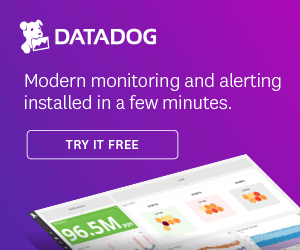Enhancing data center safety requires a critical focus on physical security measures. The integration of robust access control systems and advanced surveillance technologies is essential. Establishing secure perimeters and thorough security policies further supports this goal. However, the role of employee training in maintaining a secure environment often goes overlooked. To truly understand the multifaceted nature of data center security, one must explore each component in detail.
Understanding the Importance of Physical Security in Data Centers
Although many focus on cybersecurity measures, physical security is equally essential for safeguarding data centers. The protection of tangible assets—servers, storage devices, and networking equipment—is critical to maintaining operational integrity. Unauthorized access to a data center can lead to catastrophic information breaches, equipment damage, and data theft. Effective physical security measures, such as restricted access controls, surveillance systems, and environmental monitoring, create robust barriers against potential threats. Additionally, ensuring proper personnel training increases awareness of security protocols, reducing the risk of insider threats. Ultimately, combining physical security with cybersecurity strategies fortifies the overall resilience of data centers, ensuring they can effectively protect sensitive information from both external and internal disruptions. The importance of this dual approach cannot be overstated in today's digital landscape. Additionally, participating in webinars on data management provides valuable insights on fortifying security protocols.
Conducting a Comprehensive Risk Assessment
Conducting a thorough risk assessment is essential for safeguarding data centers against potential threats. This process involves identifying vulnerabilities and threats, analyzing their likelihood and impact, and prioritizing security measures accordingly. By systematically addressing these factors, data center managers can enhance their overall security posture. Additionally, leveraging real-time data and analytics can provide insights into potential security gaps and improve the effectiveness of security measures.
Identifying Vulnerabilities and Threats
Identifying vulnerabilities and threats within a data center is crucial for ensuring its overall security and operational integrity. An exhaustive risk evaluation enables organizations to pinpoint weaknesses that could be exploited by external or internal threats. This process involves examining physical security measures, such as access controls, surveillance systems, and environmental protections, as well as evaluating policies and procedures. Common vulnerabilities may include inadequate building access, outdated technology, and insufficient employee training. Additionally, potential threats can arise from natural disasters, cyberattacks, or insider misconduct. By systematically identifying these risks, data center administrators can prioritize mitigation strategies, thereby enhancing the facility's resilience and safeguarding sensitive information and infrastructure against potential breaches.
Analyzing Likelihood and Impact
To effectively safeguard a data center, analyzing the likelihood and impact of potential risks is essential for any thorough risk assessment. This process involves identifying various threats, such as natural disasters, cyberattacks, and human errors, alongside their potential frequency and consequences. By employing quantitative and qualitative methods, risk managers can evaluate each risk's probability and the severity of its impact on data center operations. Utilizing tools like risk matrices can aid in visualizing and prioritizing risks. Moreover, gathering historical data and expert insights enhances the accuracy of this analysis. Ultimately, an exhaustive understanding of likelihood and impact enables organizations to implement appropriate security measures, ensuring the resilience and integrity of data center environments against evolving threats.
Prioritizing Security Measures Effectively
While understanding potential risks is crucial for safeguarding data centers, prioritizing security measures based on a thorough risk assessment guarantees that resources are allocated effectively. An exhaustive risk assessment identifies vulnerabilities, assesses their likelihood, and evaluates potential impacts. This structured approach enables decision-makers to focus on high-risk areas that could substantially disrupt operations or compromise data integrity. By quantifying risks, organizations can implement tailored security measures that address specific threats, ensuring ideal use of time and financial resources. Moreover, establishing a hierarchy of security measures based on risk levels fosters a proactive security culture within the organization, ultimately leading to enhanced overall safety. Continuous monitoring and regular updates to the risk assessment are essential for adapting to evolving threats.
Implementing Access Control Systems
Access control systems are essential components in maintaining the security of data centers. By categorizing the various types of access systems and highlighting their benefits, organizations can better protect sensitive information from unauthorized access. Understanding these systems is vital for enhancing overall safety measures. Moreover, data centers have a meticulous selection process for partners that reinforces the importance of robust access control measures.
Types of Access Systems
Implementing effective access control systems is essential for maintaining security in data centers, as it protects sensitive information from unauthorized individuals. Various types of access systems are utilized to guarantee tight security. Keycard access systems enable authorized personnel to enter designated areas using programmable cards. Biometric systems, which include fingerprint and facial recognition technology, provide advanced verification by relying on unique physical characteristics. Furthermore, numeric keypads offer a straightforward method of access, allowing users to enter a specific code. Additionally, mobile access systems, which utilize smartphones or smartwatches, are gaining popularity due to their convenience. Each type provides distinct advantages, catering to different security needs while enhancing overall efficiency in controlling access to critical areas within the data center.
Benefits of Access Control
Effective access control systems contribute substantially to enhanced security within data centers, ensuring that only authorized personnel can access sensitive areas. These systems minimize the risk of unauthorized access, safeguarding valuable assets and sensitive data. By implementing stringent access protocols, data centers can reduce the likelihood of internal and external threats, including theft, sabotage, and data breaches. Additionally, detailed access logs provide accountability and traceability, aiding in incident investigation and compliance with regulatory requirements. Integration with other security measures, such as surveillance cameras, further enhances situational awareness and response capabilities. Ultimately, adopting effective access control systems not only protects physical infrastructure but also fosters a secure environment that maintains business continuity and promotes stakeholder trust.
Utilizing Surveillance Technologies
While ensuring data center safety is paramount, organizations increasingly rely on surveillance technologies to enhance security measures. These technologies, including video surveillance systems, motion detectors, and advanced analytics, provide exhaustive monitoring capabilities. High-definition cameras can capture real-time footage of critical areas, while motion detectors alert security personnel to any unusual activity. With the integration of artificial intelligence, organizations can analyze data streams for anomalies, allowing for rapid incident response. Additionally, remote monitoring capabilities enable security teams to oversee operations from any location, ensuring consistent vigilance. By adopting these surveillance technologies, organizations foster a proactive security posture, minimizing the risk of unauthorized access and safeguarding crucial information housed within data centers. This technological approach enhances overall operational integrity and contributes to a secure environment. Furthermore, effective data management services ensure that all security data is processed accurately and efficiently, reinforcing the protective measures in place.
Creating a Secure Perimeter
To guarantee the security of a data center, establishing a secure perimeter is essential as it serves as the first line of defense against potential threats. This perimeter can be reinforced with physical barriers such as fences, walls, and gates, which deter unauthorized access. Additionally, implementing access control measures, including security checkpoints and visitor logs, plays a critical role in managing who can enter the premises. Surveillance cameras should be strategically placed along the perimeter to provide continuous monitoring and quick identification of unusual activities. Moreover, employing security personnel to patrol the area enhances visibility and responsiveness to incidents. By combining these elements, a secure perimeter effectively protects a data center from intrusions and potential breaches. It is also important for security personnel to have a good understanding of data management practices to better respond to incidents and maintain data center security protocols.
Establishing Security Policies and Procedures
A robust set of security policies and procedures is vital for the protection of a data center, as it outlines the framework for mitigating risks and ensuring compliance with industry standards. These policies must be exhaustive, covering areas such as access control, incident response, data handling, and employee training. Establishing clear protocols allows personnel to understand their responsibilities and the importance of adhering to security measures. Regularly reviewing and updating these policies is essential to address evolving threats and technological advancements. Additionally, fostering a culture of security awareness within the organization promotes diligence among staff, encouraging proactive behaviors. Ultimately, effective security policies and procedures serve as the backbone of a data center's defense strategy, safeguarding critical assets.
Regular Security Audits and Maintenance
Regular security audits and maintenance are essential for identifying vulnerabilities and guaranteeing the effectiveness of a data center's security measures. These audits involve systematic examinations of security protocols, hardware, and software systems to uncover any weaknesses that could be exploited. By conducting these checks regularly, organizations can adapt to evolving threats and enhance their security postures. Additionally, routine maintenance guarantees that all security equipment functions properly, reducing the likelihood of failures during critical situations. Keeping an updated inventory of security assets can streamline this process, allowing for swift action if inconsistencies arise. Ultimately, consistent audits and maintenance foster a culture of accountability, reinforcing the importance of safeguarding sensitive data and maintaining operational integrity within the data center environment.
Training and Educating Staff on Security Protocols
Effective training and education of staff on security protocols is critical in combatting potential threats within a data center environment. Extensive training programs equip employees with the knowledge they need to identify risks and respond appropriately. Regular workshops and simulations help reinforce protocols, guarantee familiarity with emergency procedures, and enhance overall security awareness. An informed staff can serve as the first line of defense, recognizing suspicious activities and reporting them promptly. Moreover, ongoing education helps keep security measures current with evolving threats. By fostering a culture of vigilance and accountability, organizations can substantially reduce vulnerabilities. Ultimately, investing in staff training not only protects data center assets but also contributes to a safe and secure operational environment.
Frequently Asked Questions
How Do Physical Security Measures Protect Against Insider Threats?
The implementation of physical security measures, such as access control and surveillance, mitigates insider threats by restricting unauthorized entry and monitoring employee actions, thereby reducing opportunities for potential malicious activities within sensitive environments.
What Are the Costs Associated With Implementing Physical Security Measures?
The costs associated with implementing physical security measures can vary substantially. Expenses may include equipment procurement, installation, maintenance, personnel training, and ongoing operational costs, which together contribute to the overall budget required for effective security solutions.
How Can Natural Disasters Impact Data Center Security?
Natural disasters can severely compromise data center security by damaging infrastructure, disrupting power supplies, and threatening employee safety. Preparedness and resilience measures become essential to mitigate these risks and guarantee operational continuity in affected areas.
What Role Does Employee Morale Play in Security Effectiveness?
Employee morale substantially influences security effectiveness, as motivated staff are more vigilant and proactive. Positive workplace environments foster collaboration and communication, enabling employees to recognize and report security threats, ultimately enhancing overall safety within the organization.
How Often Should Security Technologies Be Updated or Replaced?
The frequency of updating or replacing security technologies depends on advancements in technology, evolving threats, and organizational needs. Regular assessments are vital to guarantee systems remain effective, reliable, and aligned with industry standards and compliance requirements.
Conclusion
To recap, enhancing data center safety through robust physical security measures is vital for safeguarding sensitive information and infrastructure. By conducting thorough risk assessments, implementing access controls, and utilizing surveillance technologies, data centers can create a secure environment. Establishing clear security policies and conducting regular audits further strengthen these efforts. Ultimately, investing in employee training and education guarantees that all personnel are equipped to uphold security protocols, fostering a culture of safety and vigilance within the data center.






